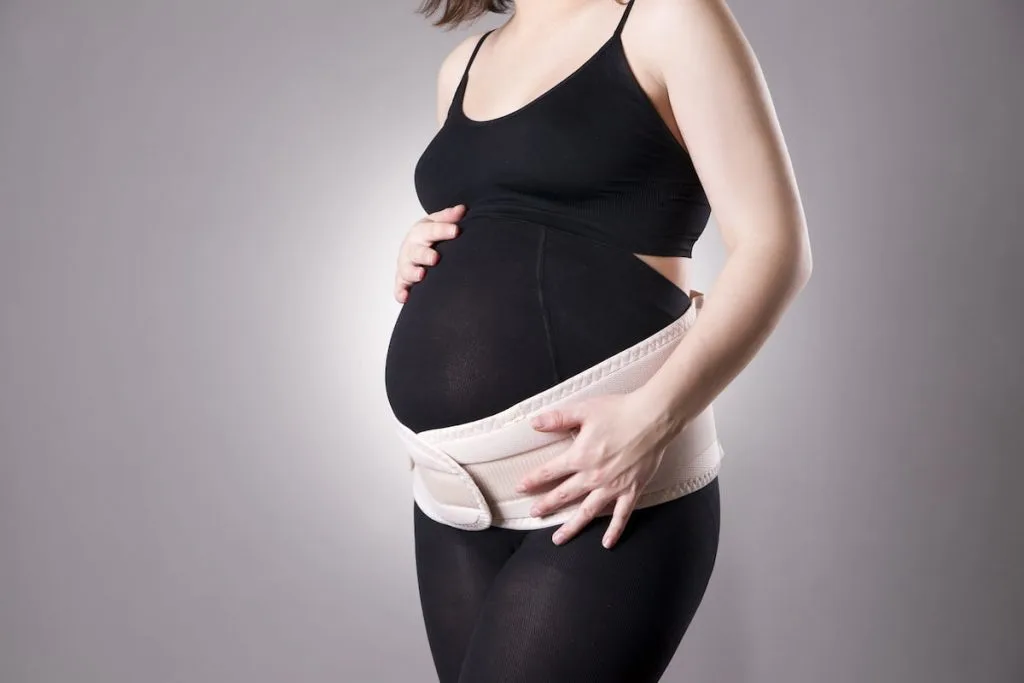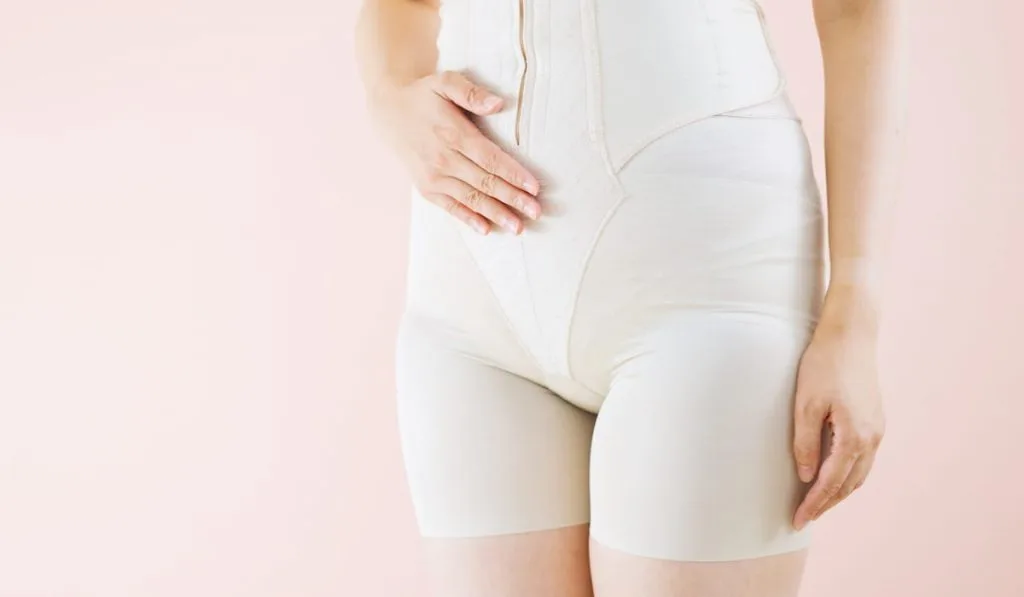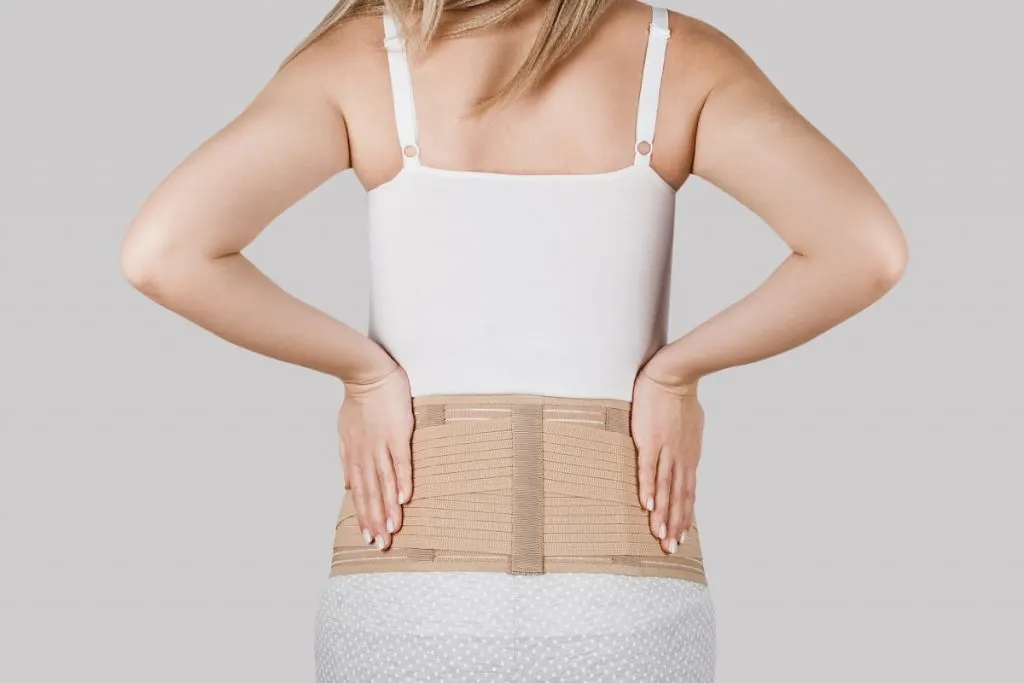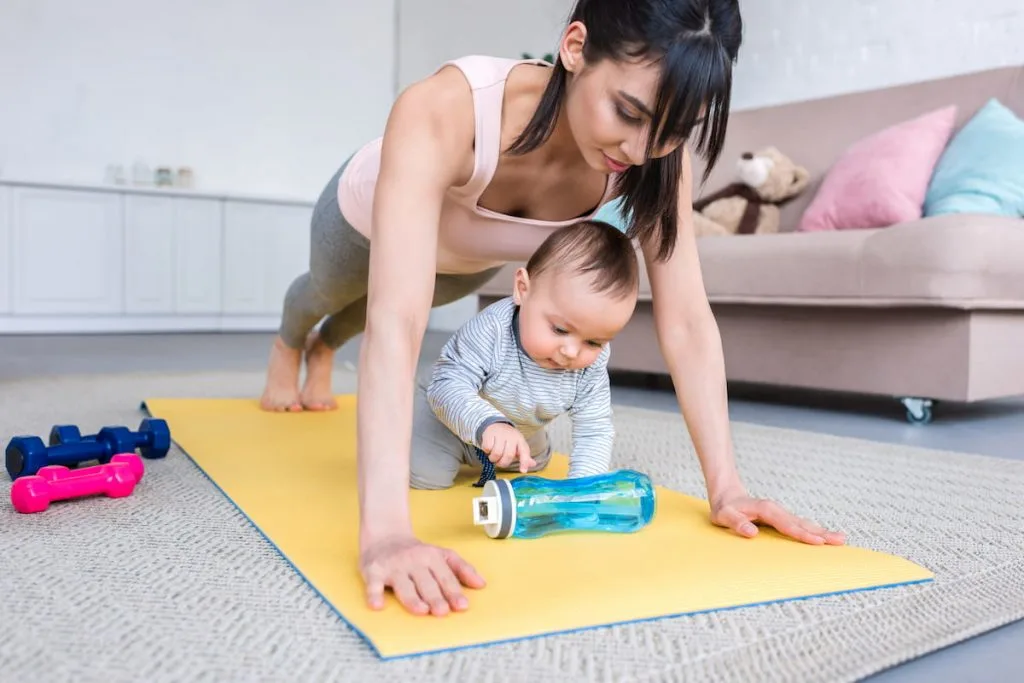Postpartum belly wraps provide support to your abdominal muscles in the weeks and months after delivery.
Depending on your body and how you’re carrying your baby, you may also want to wear a belly wrap before birth to ease the stress on your lower back and abdomen.
Ideally, you should start wearing a postpartum belly wrap almost immediately after delivery. Most moms who find them beneficial report using them for up to 8 weeks after they have their baby.
Putting a belly wrap on too late will limit its effects and may only serve to compress the stomach.

While it’s never too late to wear a wrap, you’ll get more benefits the earlier you begin using one.
In addition, you can focus on exercises to strengthen your core, which will help you feel better and move with confidence.
Below is some helpful advice on the benefits of postpartum belly wraps, when to wear them, and what to do if you start wearing one too late.
What Is a Postpartum Belly Wrap?
Postpartum belly wraps, also known as postpartum girdles or bands, are shapewear designed to offer waist support after childbirth.
Wraps are typically made of a strong, soft material that’s flexible and fits tightly around your stomach and core area. This helps you fit into normal clothes more easily and avoid abdominal strain.
Here are some of the benefits of wearing a postpartum wrap:
Eases Pain
Though there is not much concrete evidence that postpartum wraps reduce pain, many new mothers use wraps, particularly those women who gave birth via C-section.
Stitches and the underlying incisions weaken abdominal muscles. It can take weeks for them to heal.
Postpartum wraps prevent awkward movements that could put stress on damaged body parts. It’s hard to bend at the waist when wearing a tightly wrapped belly band.
Wraps also offer a barrier between damaged muscles and jeans, belts, and other uncomfortable clothing that can brush up against the stomach.
Better Alignment
One of the best things about a postpartum belly wrap is that it helps mothers maintain good posture.
When new moms are recovering and have weak muscles, maintaining good posture is critical to avoid extra stress on the pelvis and other weakened bones. Using a postpartum wrap helps the body recover.
Acts as Shapewear

It’s common for new moms to be eager to get back into their regular clothes after their baby is born.
A good belly wrap can act as shapewear without having to wear extra layers. The wrap goes on your abdomen, making getting into pants or fitting into regular shirts much more comfortable.
When to Wear a Postpartum Belly Wrap?
Moms can usually start wearing a postpartum wrap right after delivery. However, make sure to check with your doctor regarding your specific situation.

You’ll get better results the sooner and more regularly you wear your postpartum belly wrap. If you wait too long before you wear it, it may be too difficult to adjust your posture.
In addition, your muscles may have hardened incorrectly, which means the wrap won’t be as effective.
For best results, wear your wrap frequently. Wearing it occasionally may help you look better in a tight shirt or slide into your old pants faster, but frequent use will help your body recover faster.
Wear your wrap early and often until you feel comfortable with your recovery.
Waiting Too Long
Don’t wait more than 4 months to begin wearing a postpartum belly wrap. Even waiting 8 weeks can affect your long-term results.
If you gave birth more than 4 months ago and have not yet started wearing a postpartum wrap, you probably should not start wearing one now.
Instead, you should do muscle exercises to strengthen your core and your pelvic floor.
Research some postpartum core exercises, or work with a personal trainer to build muscle.
Different Types of Postpartum Bands
New moms often say it’s hard to choose which type of band to buy. Indeed, all the different designs, styles, and prices can make selecting the best wrap a challenge.
Here are the main types of bands:
Belly belts: These are usually thinner than belly bands, fitting over the area most in need of support. They fit around the stomach and hips to improve posture and prevent abdominal pain.
Belly wraps: As the name suggests, belly wraps are designed to cover more of your abdomen. They are more comfortable than a belt.
A good wrap will cover your entire midsection down to your hips. It isolates the core and prevents overuse of your stomach muscles.
Multi-component bands – Some bands come with multiple parts that either Velcro or fasten together for added support. These bands typically deliver more compression power to the stomach.

How to Choose the Best Wrap
The wrap you choose will impact how much you wear it. Here are some things to consider before you buy one.
Comfort
We recommend choosing a basic, comfortable wrap for your first postpartum belly wrap.
A wrap made of soft, flexible material will be easy to wear for hours. It can be made of spandex, nylon, cotton, or a mix of soft fabrics.
Check Out Reviews
Before buying a belly wrap, you should always read reviews to see what other mothers say. Only buy proven products with good customer reviews.
Many reviews include pictures and videos of how to wear the wrap, as well as before and after pictures.
While it’s uncertain how your body will change after childbirth, the reviews can point you in the right direction.
Range of Motion
Avoid anything too restrictive. A good belly wrap encourages you to sit and stand up straight, but it’s not impossible to move while you’re wearing it.
Skip the inflexible corsets or trainers that make it painful to move.
Inserts
If you’re interested, you can also find wraps with inserts for ice packs or heat pads. These can help if you’ve had surgery, or if you have aches and pains after delivery.
Size
Size is another consideration. If you look online, you’ll see wraps and belts in various thicknesses.
Thicker wraps tend to restrict movement more than thinner models, so you’ll have to think about how much support you need.
Small wraps fit over jeans, trousers, and skirts to look like the bottom of a t-shirt.
They cover only the hips and the lower abdominal muscles. Larger models will reach all the way up to your lower rib cage to deliver better core support.
What If It’s Too Late?
As mentioned before, don’t start wearing a postpartum wrap more than 4 months post-delivery, as it will not be effective.
However, you can still exercise your core to develop stronger muscles.
Below are some basic exercises to strengthen your stomach and pelvic core in the months after giving birth.

Before exercising, keep in mind that childbirth is hard on your body. Take things slowly and be gentle to avoid injuries, like torn muscles.
When you’re pregnant, your abdominal muscles split and stretch; this takes time to recover.
Take Deep Breaths
Lie on your back with your knees bent. Take long and slow breaths that fill up your lungs. Once you’re full of air, start a steady exhale, focusing on your stomach and pelvic floor.
You should feel them contract throughout the breath. As you continue, try to make your breaths as long as possible while maintaining a tight core.
Bridges
While lying flat on your back with knees bent, slowly lift your hips to the sky in a pelvic bridge. Repeat ten times and then rest.
Try to do several sets, going as high as possible with your hips. Keep your knees together to focus your movement on your core muscles.
Planking
When you can, start planking to increase your core exercise intensity.
Place your elbows and forearms on the floor. Use your tiptoes and lift your body off the ground, keeping your stomach and leg muscles tight.
Hold this position for as long as you can. Rest and repeat.
Leg Lifts
Leg lifts and scissor kicks are great lower abdomen exercise for new moms. Lie on your back with your knees against the ground and feet extended.
Lift your feet about a foot off the ground and hold the position. Then, start scissoring your legs like you’re swimming a freestyle stroke in the pool. Rest and repeat.
Recovering from pregnancy and childbirth is hard.
Whether you’re wearing a wrap or trying to get back to the gym, give yourself some grace on your journey to recovery.
